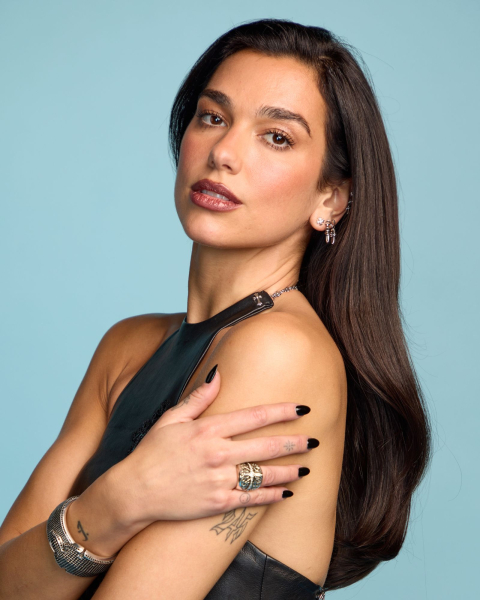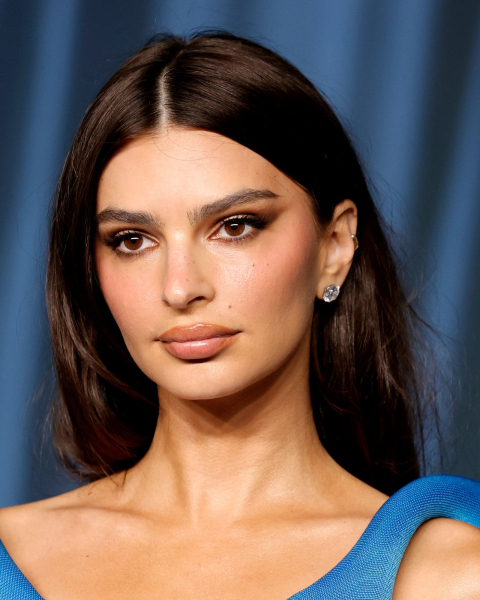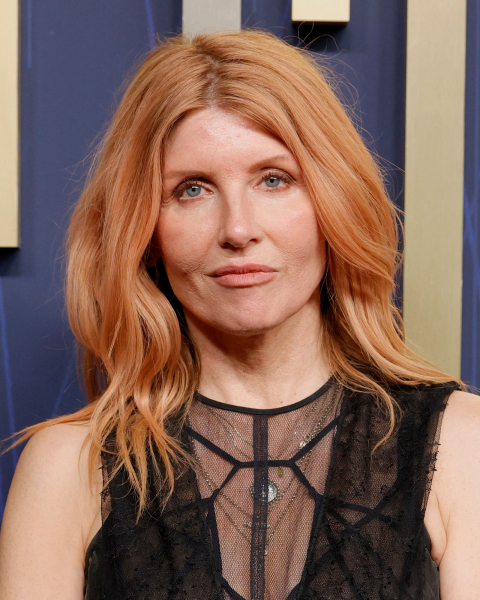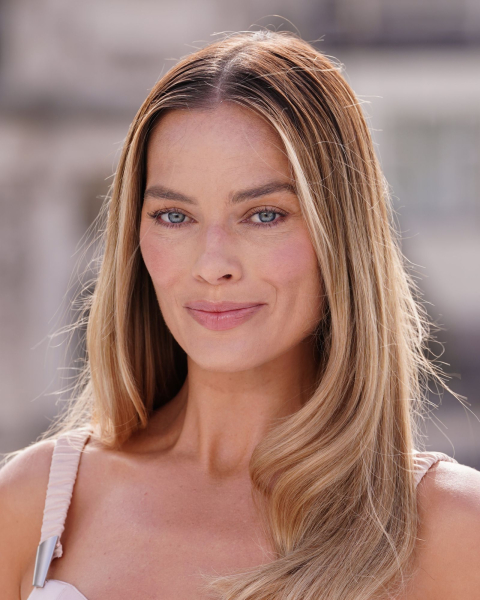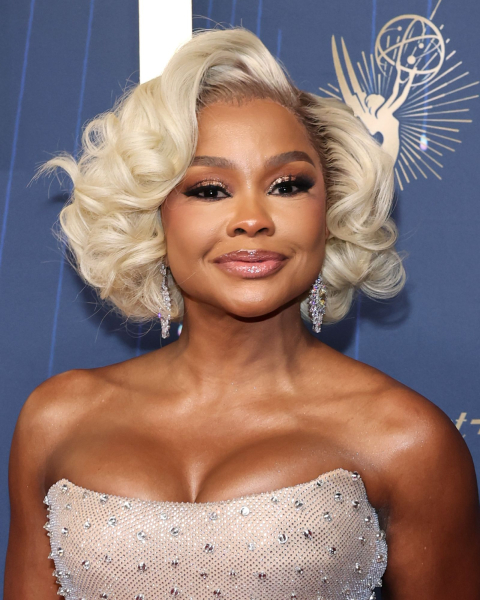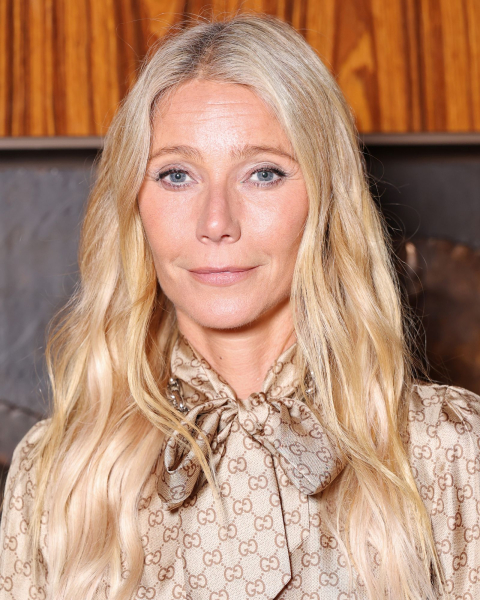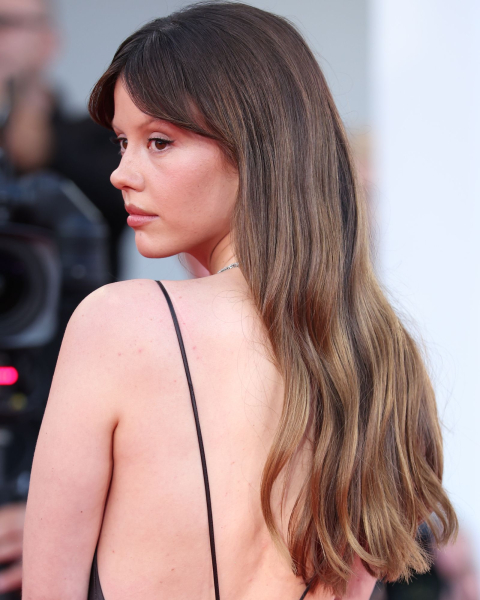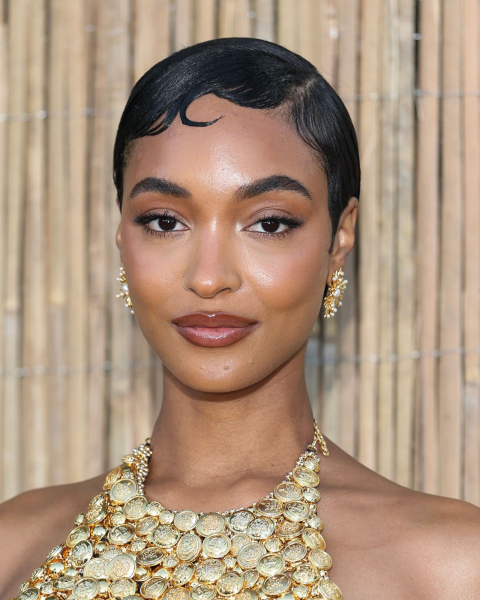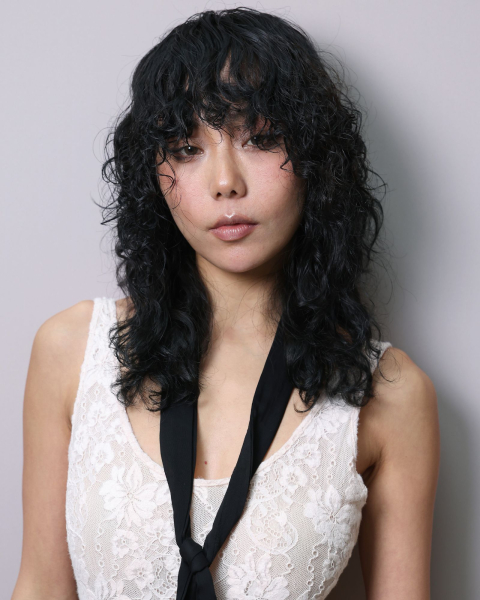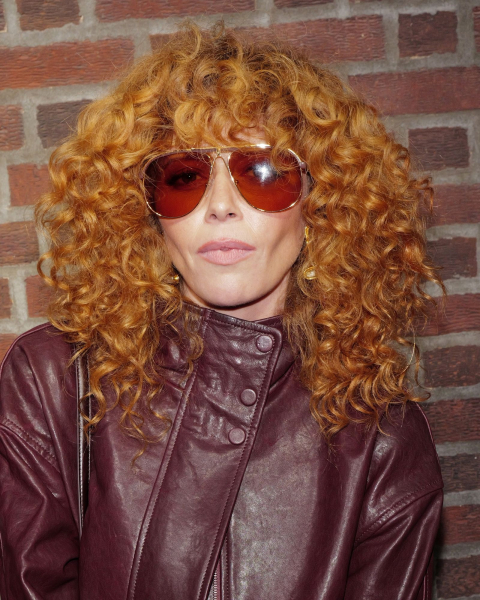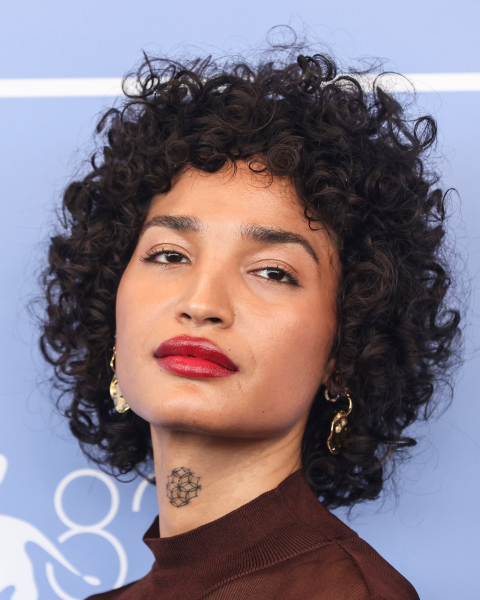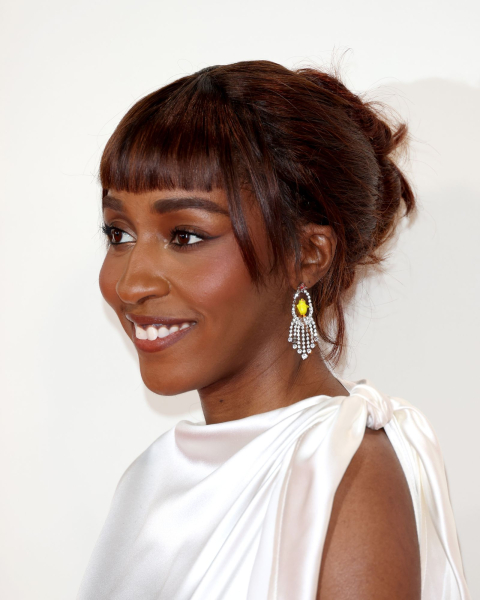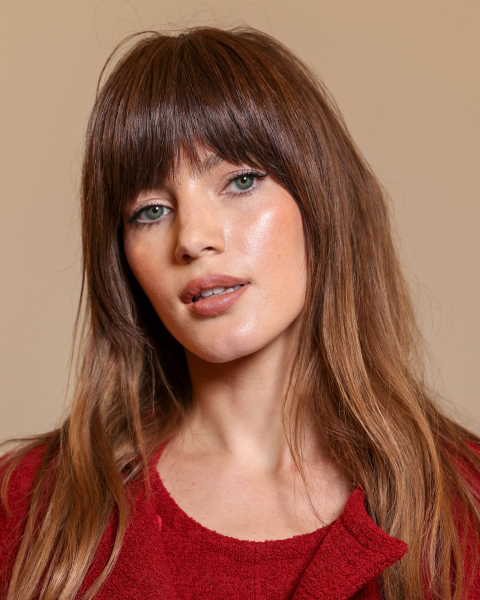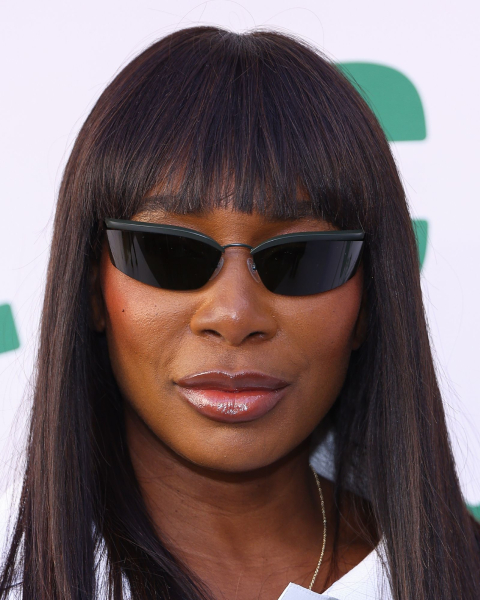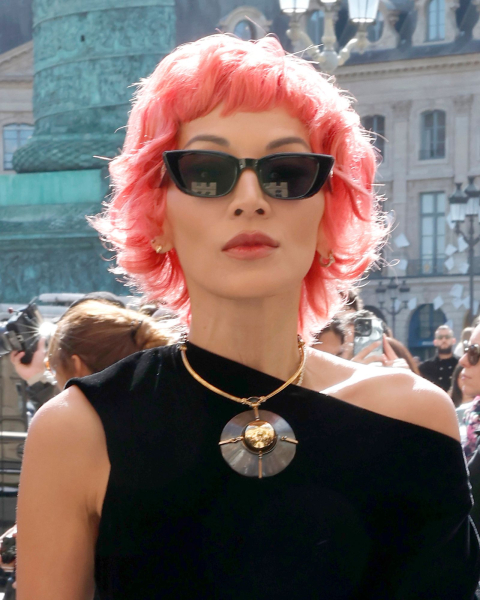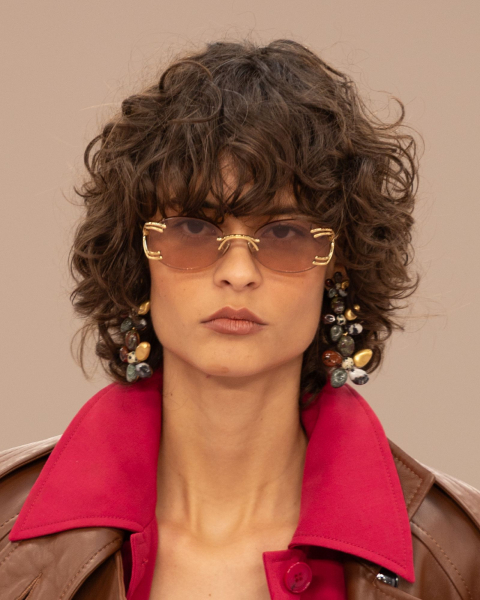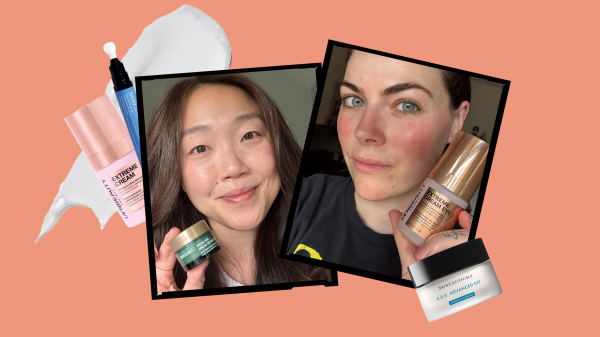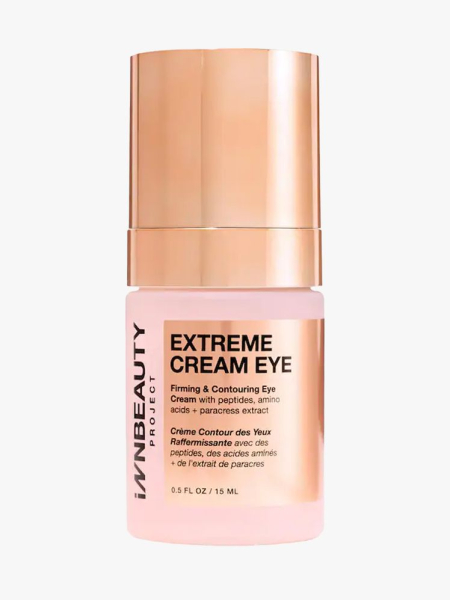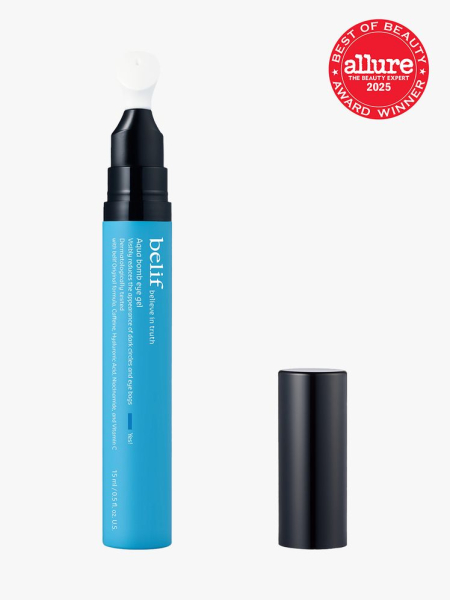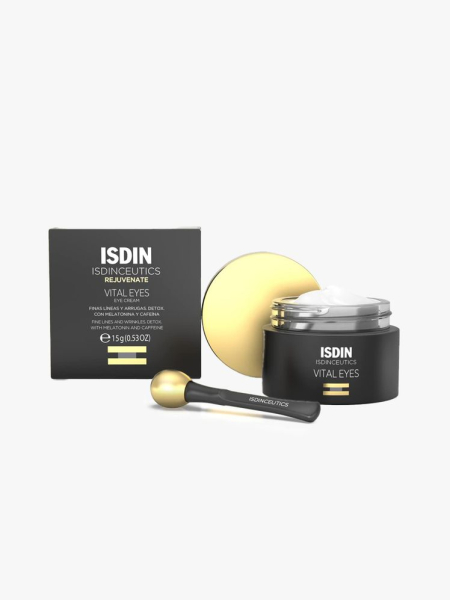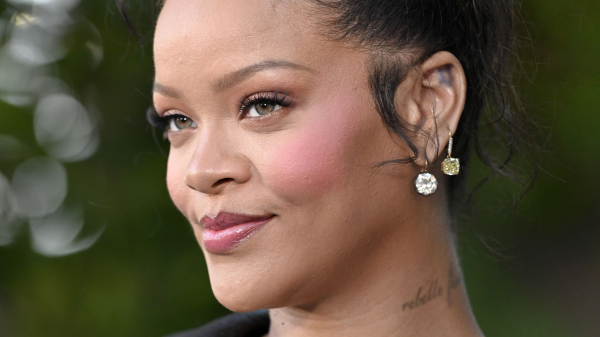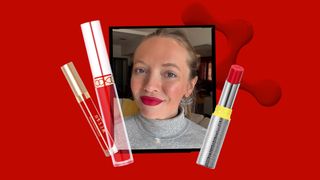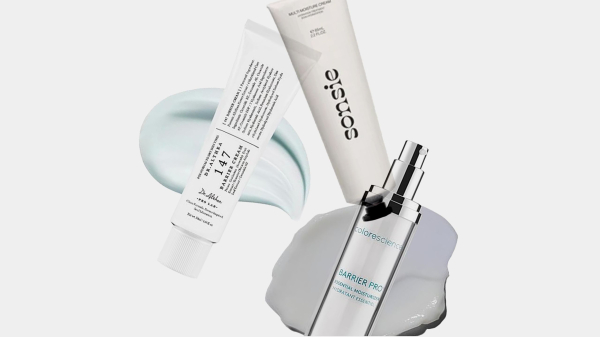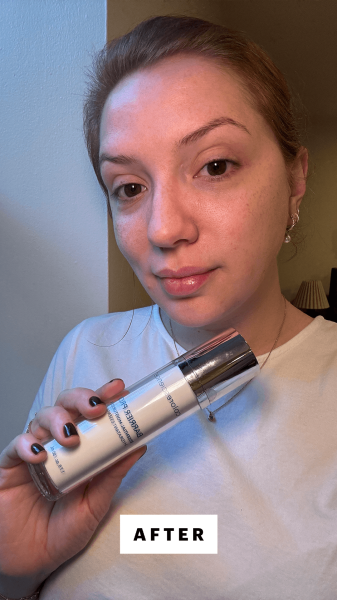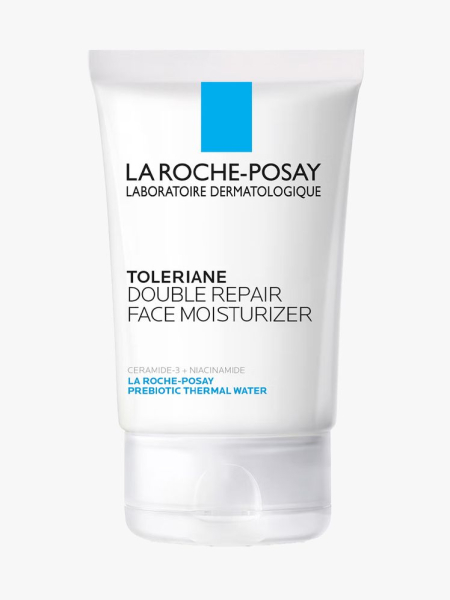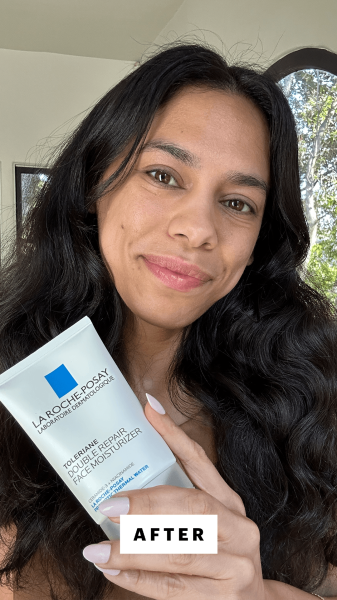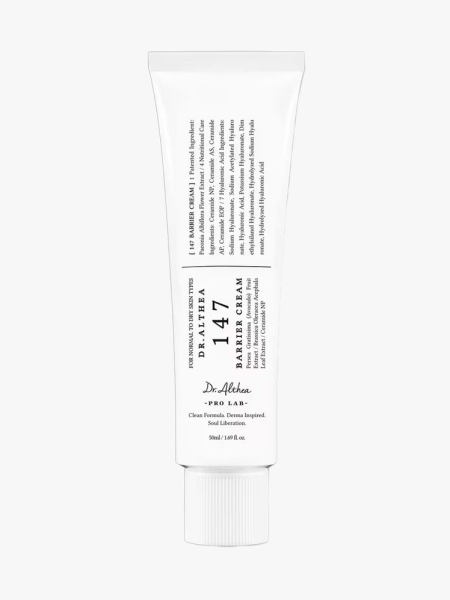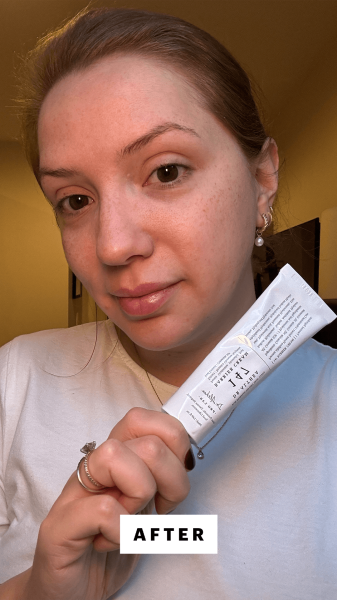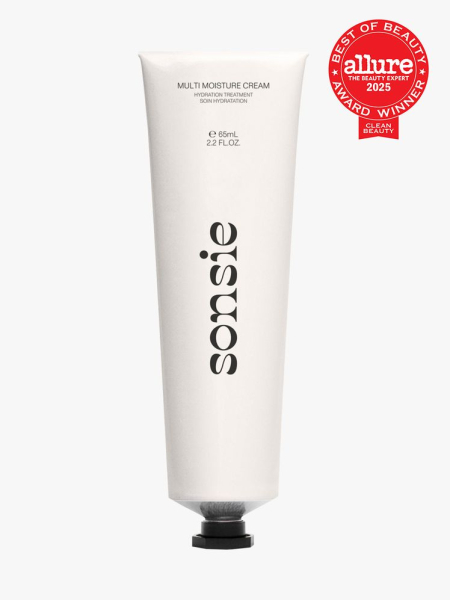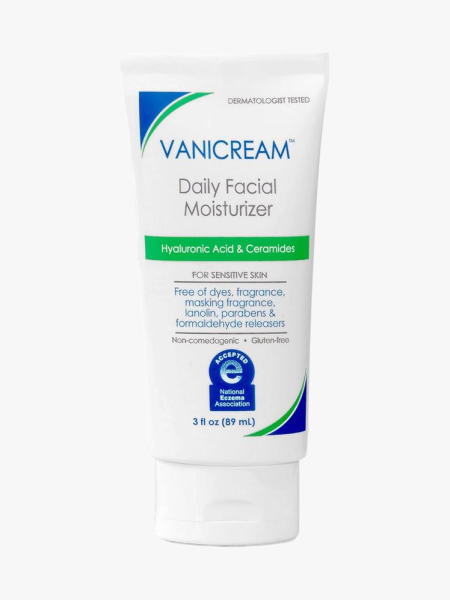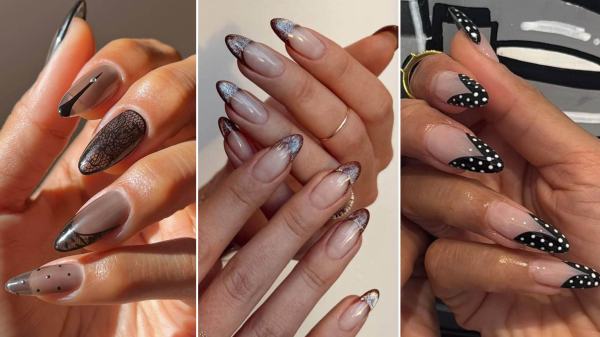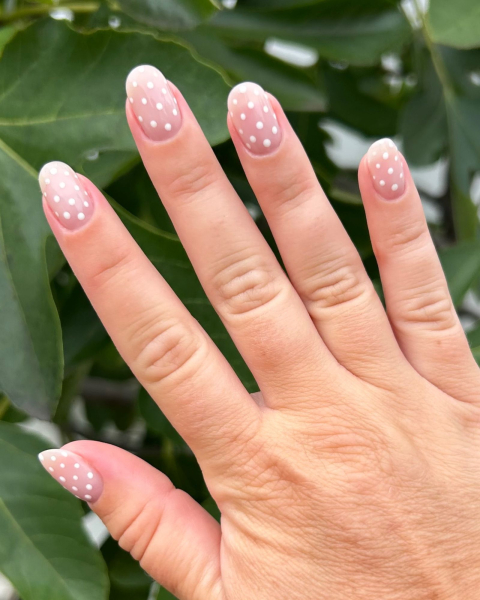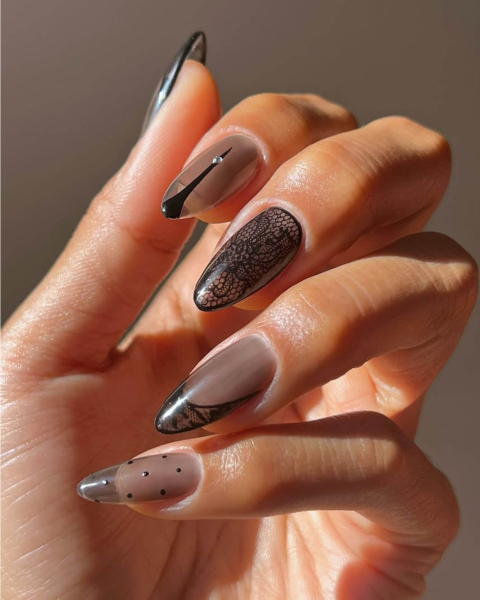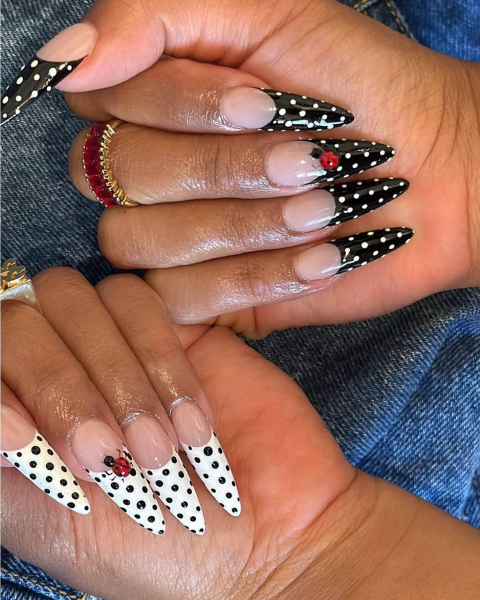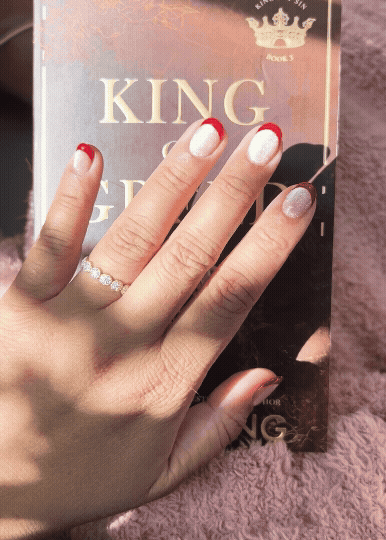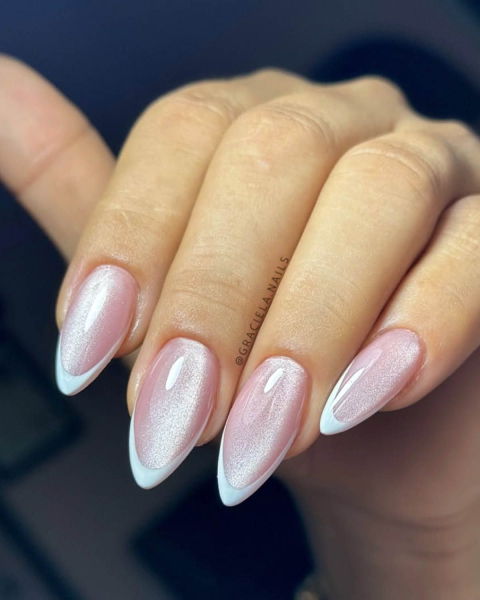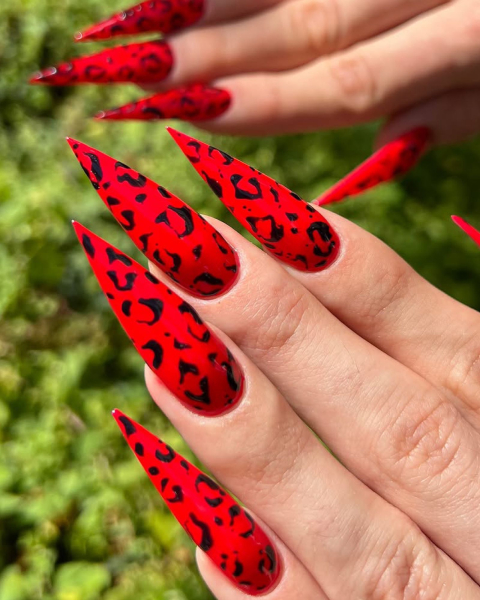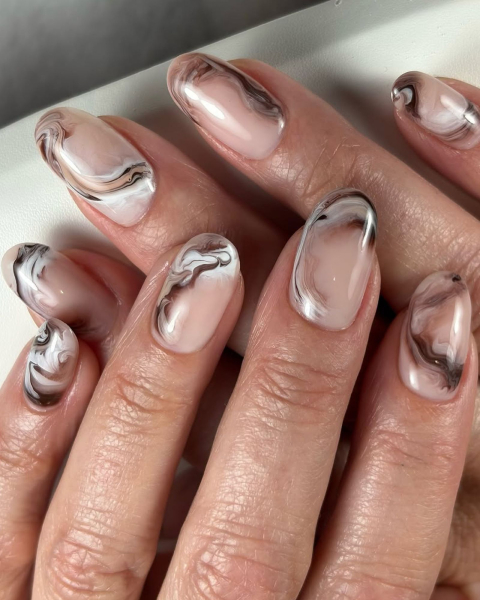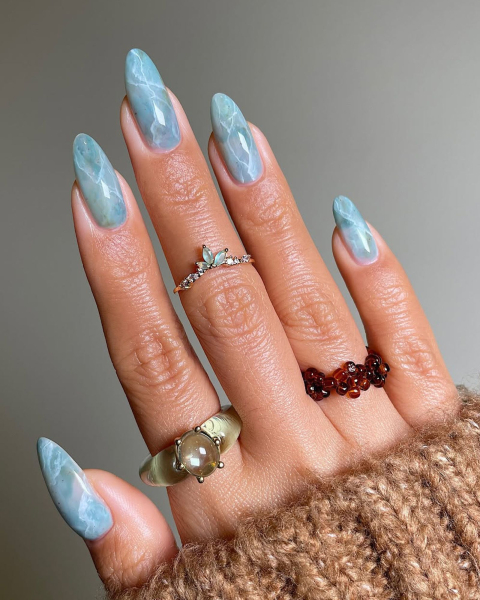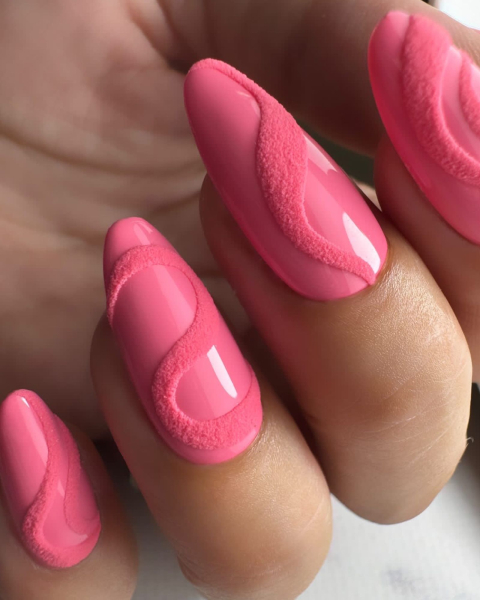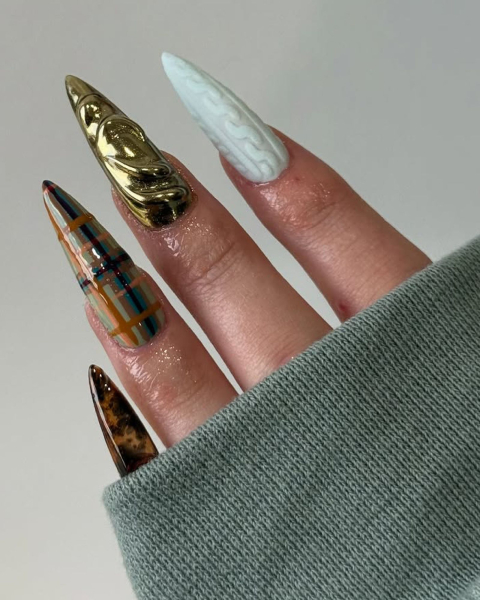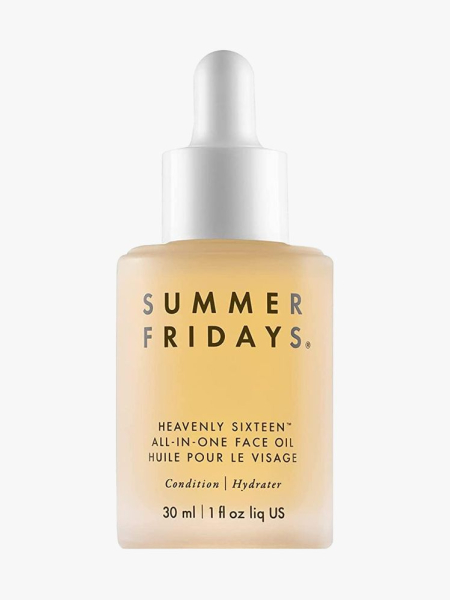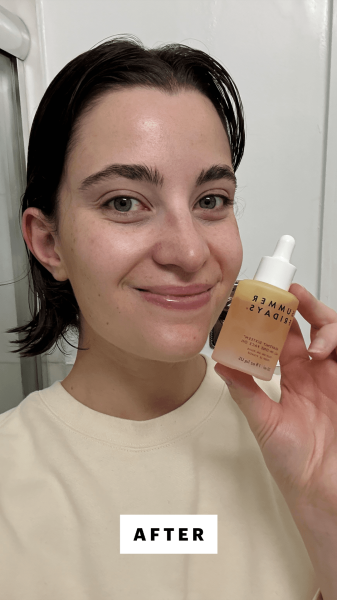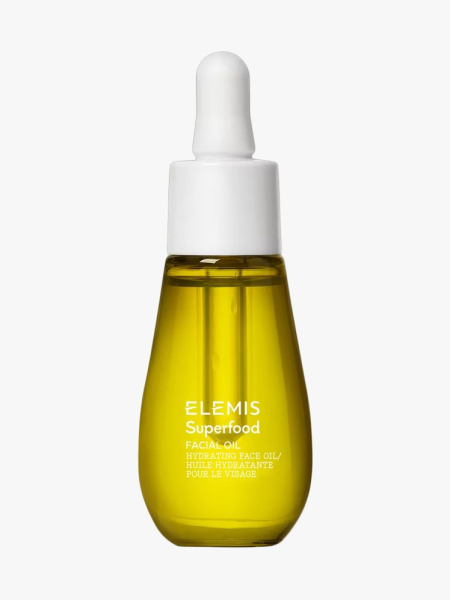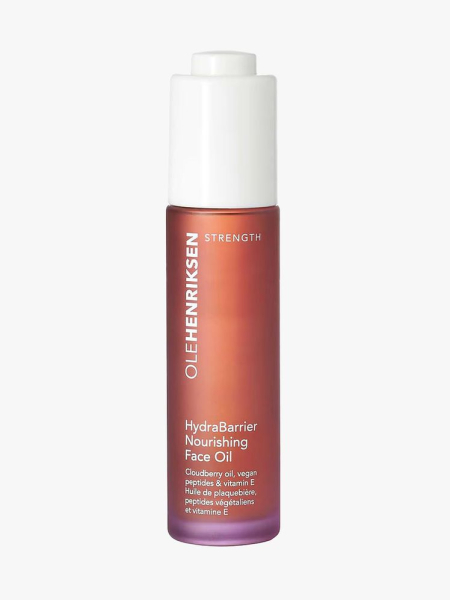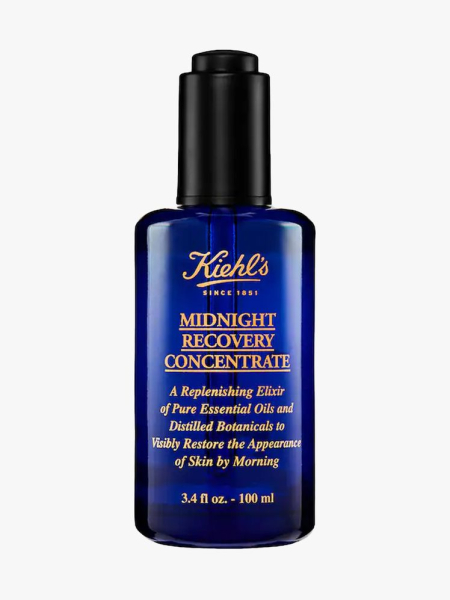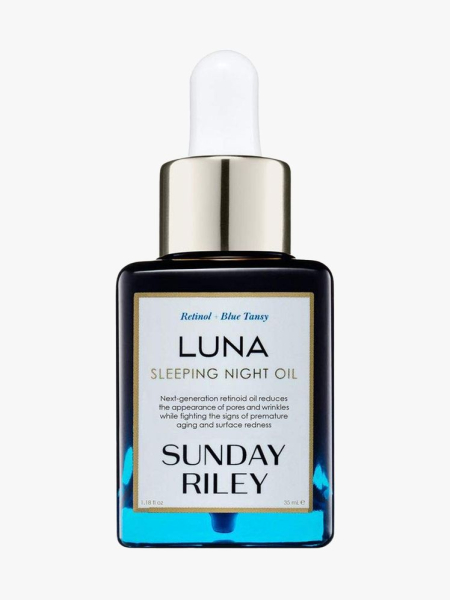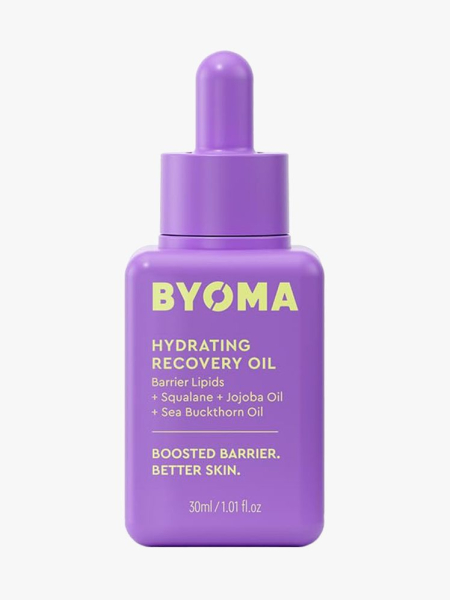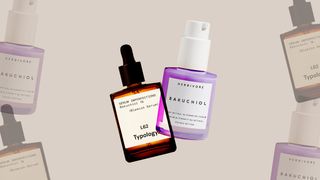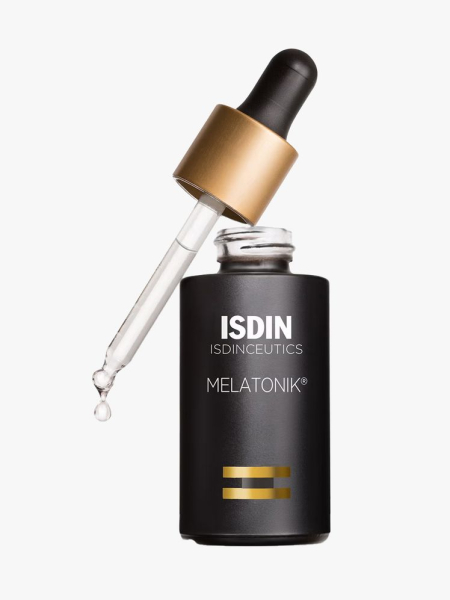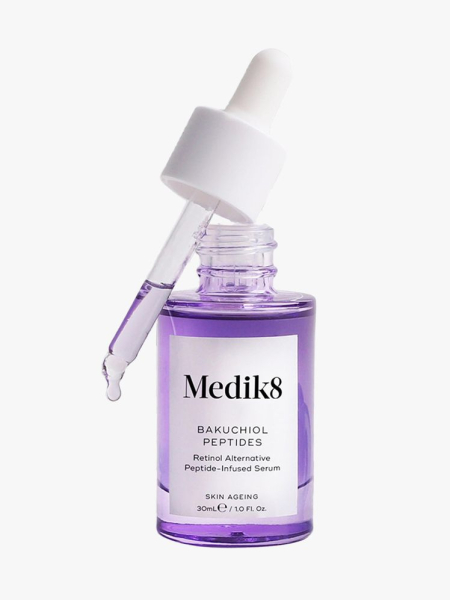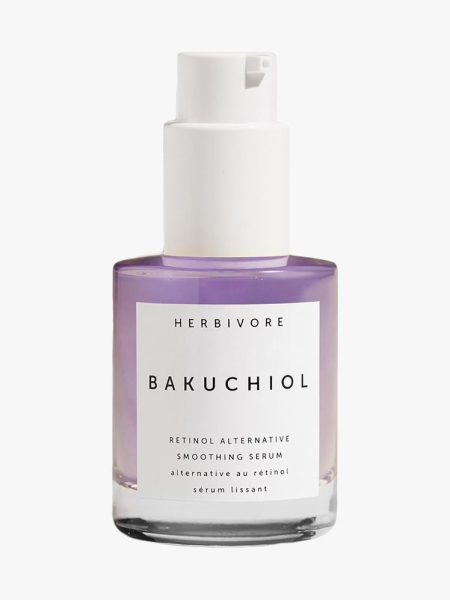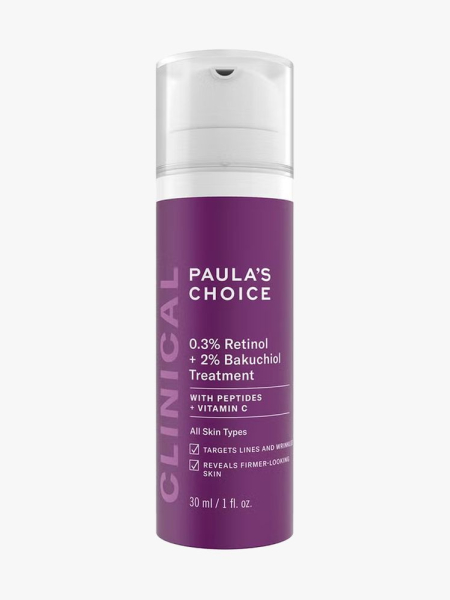Collage: Paula Balondo; Source images: Courtesy of Allure editors and brands
Save StorySave this storySave StorySave this story
Much like a little black dress or sleek low bun, a swipe of the best red lipstick is a timeless look. In our humble opinion, a vibrant cherry or bold crimson lip is equally well-suited for weddings and late-night dancing, as it is for workdays and weekend brunches with the girls. (TikTok has even coined the “Red Lip Theory” that claims a swipe of red lipstick can brighten up your entire face.) And now more than ever, there are infinite shades, finishes, and undertones so you can find your perfect match.
Allure editors have swatched and applied too many red lipsticks to count—which is to say, we’ve found quite a few enduring favorites along the way. Ahead, we share everything from drugstore must-haves to high-end shades that fit any occasion, any time of year.
Our Editors’ Favorite Red Lipsticks
- Jessica Cruel, editor in chief: Anastasia Beverly Hills Liquid Lipstick in American Doll, $23
- Sarah Felbin, senior commerce editor: Trinny London Just Joyous Lipstick in Poppy, $34
- Ingrid Fowler, senior art director: Nars Powermatte Lip Pencil in Dragon Girl, $32
- Nicola Dall’Asen, senior news editor: Violette_FR Plume Lip in En Feu, $31
- Kara McGrath, former content director: Tom Ford Slim Lip Color Shine in Scarlet Rouge, $45
- Sarah Han, commerce editor: Maed Signature Lip Pigment in Ritual Red, $36
- Sarah Kinonen, associate beauty director: Poundcake Cake Batter Liquid Lipstick in Red Velvet, $24
- Angela Trakoshis, former shopping market editor: Dior Rouge Dior Forever Transfer-Proof Lipstick in Forever Dior, $48
- Lexi Herrick, senior director of audience development: Stila Stay All Day Liquid Lipstick in Beso, $24
Frequently Asked QuestionsAccordionItemContainerButtonLargeChevron
- How do I choose the best red lipstick for my skin tone?
- How do you make red lipstick last?
- Meet the experts
- How we test and review products
- Our staff and testers
Jessica Cruel, editor in chief: Anastasia Beverly Hills Liquid Lipstick in American Doll
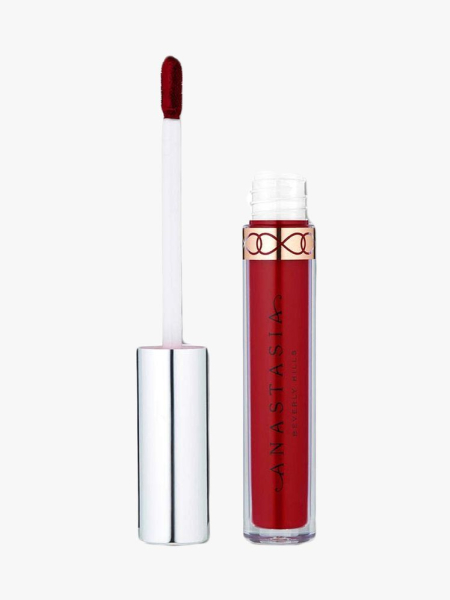
Anastasia Beverly Hills
Liquid Lipstick in American Doll
$23
Amazon
$23
Nordstrom
$23
Ulta Beauty

Allure editor in chief Jessica Cruel after applying brown lip liner and Anastasia Beverly Hills Liquid Lipstick in American Doll.
Jessica Cruel
Why we love it: With 10 shades of Anastasia Beverly Hills Liquid Lipstick to choose from, finding your new go-to is practically guaranteed—but the bold red American Doll is a clear editor favorite. The formula’s staying power is seriously impressive, holding up flawlessly from morning to night, and the paddle-shaped applicator makes lining and filling in color a one-swipe job. The finish is soft and powdery, but never so matte that it veers into dry, cracked, or cakey territory.
Tester feedback from Cruel
AccordionItemContainerButtonLargeChevron
“I've been using this same blue-red lip shade from Anastasia Beverly Hills for years. The liquid formula dries down fast and lasts through every passed hors d'oeuvre at the numerous beauty events I attend (even sliders!).” —Jessica Cruel, editor in chief
More to know
AccordionItemContainerButtonLargeChevron
- Finish: matte
- Available red shades: 2 (American Doll and Sarafine)
Sarah Felbin, senior commerce editor: Trinny London Just Joyous Lipstick in Poppy

Trinny London
Just Joyous Lipstick in Poppy
$34
Trinny London
Allure senior commerce editor Sarah Felbin applying the Trinny London Just Joyous Lipstick.
Sarah Felbin
Why it’s worth it: In all of our years of testing lipsticks, we’ve found that most formulas don’t usually offer a glossy sheen and intense moisture, but that’s not the case with Trinny London’s Just Joyous Lipstick. Not only does it provide high color payoff with buildable coverage, but it’s also hydrating and plumping, thanks to hyaluronic acid, moringa and maracuja oils, and palmitoyl tripeptide-1. Outside of the two red shades (one leans pink and the other leans orange), we also love the neutral color options, like Martha, a rosy nude, and Mitra, a nude brown that’s perfect for fall.
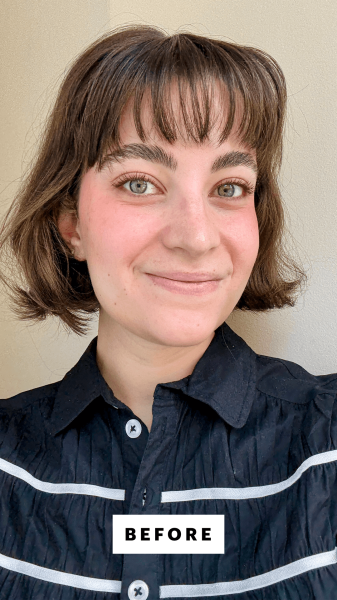
Felbin before applying the Trinny London Just Joyous Lipstick in Poppy.
Sarah Felbin
Felbin after applying the Trinny London Just Joyous Lipstick in Poppy.
Sarah Felbin
Tester feedback from Felbin
AccordionItemContainerButtonLargeChevron
“I wear a red lip often, and lately this one from Trinny London has become my go-to. Unlike other reds I've tried, this one feels soft and lightweight, almost like a lip balm. As it wears, it doesn't get sticky, feather, or cling to dry patches—my lipstick pet peeve. I usually pair it with a red lip liner, but I love that I don't have to. (I'm wearing it alone above.) Poppy is an orange-red shade that's slightly sheer and can be built up or reapplied easily. For a more blue-red, try Paris.”—Sarah Felbin, senior commerce editor
More to know
AccordionItemContainerButtonLargeChevron
- Finish: glossy
- Available red shades: 2 (Poppy and Paris)
Ingrid Fowler, senior art director: Nars Powermatte Lip Pencil in Dragon Girl
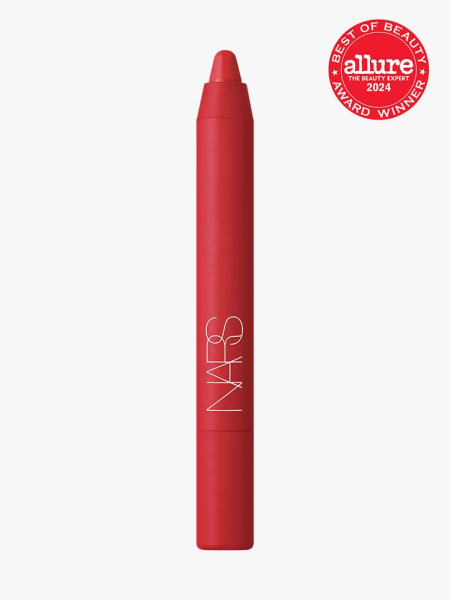
Nars
Powermatte Lip Pencil in Dragon Girl
$32
Ulta Beauty
Allure senior art director Ingrid Fowler applying the Nars Powermatte Lip Pencil in Dragon Girl.
Ingrid Fowler
Why it’s worth it: A modern twist on the brand’s beloved Velvet Matte Lip Pencils, the Nars Powermatte High-Intensity Lip Pencil (a Best of Beauty Award winner) packs bold pigment into a creamy, long-wearing formula that sets to a soft matte finish and lasts up to 12 hours. The chunky crayon makes it easy to swipe on full color in seconds, yet it's precise enough to double as a liner, making it the ultimate multitasker to stash in your bag. And true to Nars' form, the shade names are just as memorable as the formula—think American Woman, Born to Be Wild, and Dragon Girl.
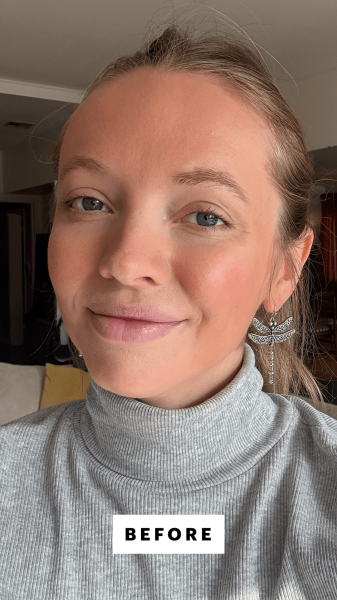
Fowler before applying the Nars Powermatte Lip Pencil in Dragon Girl.
Ingrid Fowler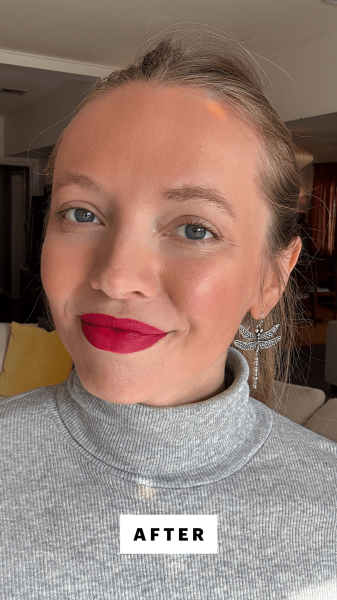
Fowler after applying the Nars Powermatte Lip Pencil in Dragon Girl.
Ingrid Fowler
Tester feedback from Fowler
AccordionItemContainerButtonLargeChevron
“Nars was not kidding when they included ‘high-intensity’ in the name of this product. This pencil packs the punch of highly pigmented lip color. The formula is extremely creamy, going on easily with one swipe, but doesn’t budge or bleed out of place. The rounded pencil tip is my preferred product design since it makes it easy to apply with precision. I’m wearing the shade Dragon Girl, a bright red that complements my cool complexion.”—Ingrid Fowler, senior art director
More to know
AccordionItemContainerButtonLargeChevron
- Finish: matte
- Available red shades: 7
Nicola Dall’Asen, senior news editor: Violette_FR Plume Lip in En Feu
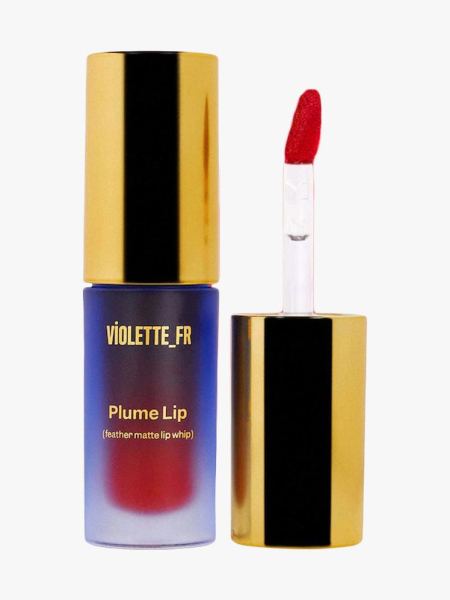
Violette_FR
Plume Lip in En Feu
$31
Sephora
$31
Violette_FR
Allure senior news editor Nicola Dall’Asen applying the Violette_FR Plume Lip in En Feu.
Nicola Dall'Asen
Why it’s worth it: If bold, long-wearing lipsticks feel too intimidating, there’s a new kid on the block. Meet Violette_FR’s Plume Lipstick, an airy, whipped formula that feels more like a silky stain than a traditional liquid lipstick, blending seamlessly to soften edges and blur lines. It glides on so smoothly, you can practically apply it without a mirror (yup, even in the Fiery Red shade). Once it sets, the color stays put for up to 12 hours while still feeling featherlight, thanks to emollients that keep your lips comfortable and kissable all day.
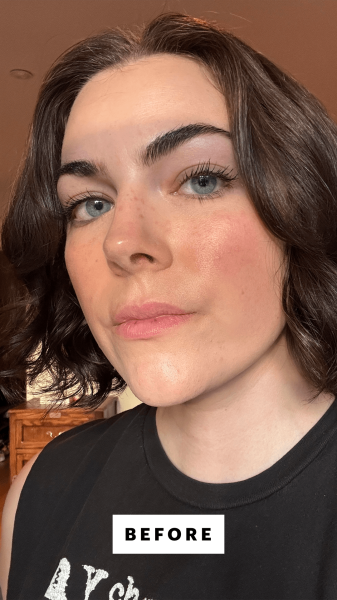
Dall’Asen before applying the Violette_FR Plume Lip in En Feu.
Nicola Dall'Asen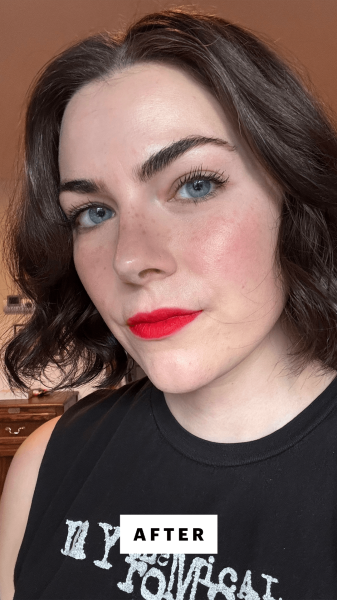
Dall’Asen after applying the Violette_FR Plume Lip in En Feu.
Nicola Dall'Asen
Tester feedback from Dall’Asen
AccordionItemContainerButtonLargeChevron
“Personally, I've never been a fan of the blurred lip look, but that's mostly on me. I usually overdo the blending part and wind up looking less like Katie Jane Hughes and more like a clown who just went to town on a Big Mac. But Violette's Plume Lip has made it so astonishingly easy that I'm becoming a convert. This isn't your standard liquid lipstick formula. It's matte, yes, but it's kind of slippery and very creamy because it's designed to move around a bit, an intentional design trait that lends itself to that velvety finish and soft edge necessary for pulling off a blurred lip. The pigments are a little sheer and totally buildable, so I like to build up the color to be really bold in the center of my lip before spreading that color further out toward the edges. It does require some setting to prevent smudging, but it's nothing a little paper-towel blot can't manage. No more of that Ronald McDonald look for me, thanks.” —Nicola Dall’Asen, senior news editor
More to know
AccordionItemContainerButtonLargeChevron
- Finish: matte, blurred
- Available red shades: 2 (En Feu and Mon Chéri)
Kara McGrath, former content director: Tom Ford Slim Lip Color Shine in Scarlet Rouge
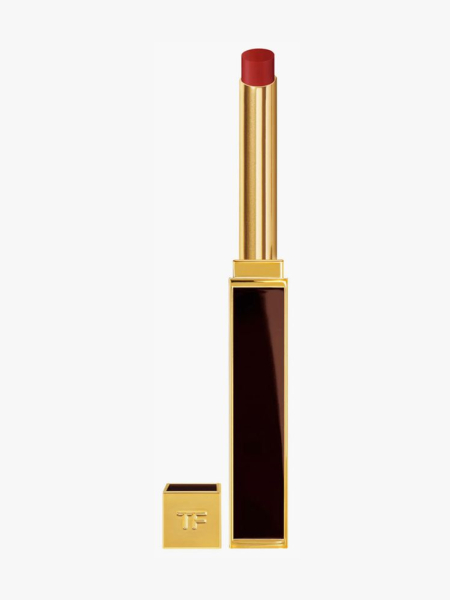
Tom Ford
Slim Lip Color Shine in Scarlet Rouge
$45
Nordstrom
$45
Bluemercury
Allure former content director Kara McGrath applying the Tom Ford Slim Lip Color Shine.
Kara McGrath
Why it’s worth it: What makes a slim lipstick so great? The thinner tip makes it easy to trace the corners of your mouth and define your Cupid’s bow—no liner or brush needed. That’s exactly why Tom Ford’s Slim Lip Color Shine is a permanent fixture in our makeup bags. Sure, it’s not the longest-wearing formula out there (that glossy finish comes with trade-offs), but it earns its spot as both a luxe lip balm and gloss in one. Packed with hydrating waxes and emollients like beeswax and avocado extract, it glides on like butter and somehow still delivers rich, even color. It’s a splurge, but the kind you’ll reach for so often, it basically pays for itself.
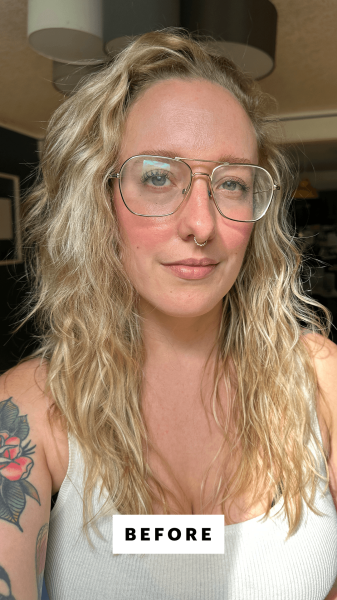
McGrath before applying the Tom Ford Slim Lip Color Shine in Scarlet Rouge.
Kara McGrath
McGrath after applying the Tom Ford Slim Lip Color Shine in Scarlet Rouge.
Kara McGrath
Tester feedback from McGrath
AccordionItemContainerButtonLargeChevron
“Applying this lipstick is nothing short of glorious. The formula is so pigmented and so silky that it goes on perfectly evenly in a single swipe. Since the bullet is quite thin, you can easily sneak into the corners of your mouth and define your Cupid's bow without using a lipstick brush. Scarlet Rouge is my perfect red; it leans slightly warm (which is ideal for me, a spring) but isn't so orange-y that it makes my teeth look yellow. Since it has a glossy finish, it's not the longest-lasting lipstick out there but, again, since it's so nice to put on, I don't mind reapplying.” —Kara McGrath, former content director
More to know
AccordionItemContainerButtonLargeChevron
- Finish: glossy
- Available red shades: 3 (Scarlet Rouge, Rose Corset, and Nubile)
Sarah Han, commerce editor: Maed Signature Lip Pigment in Ritual Red
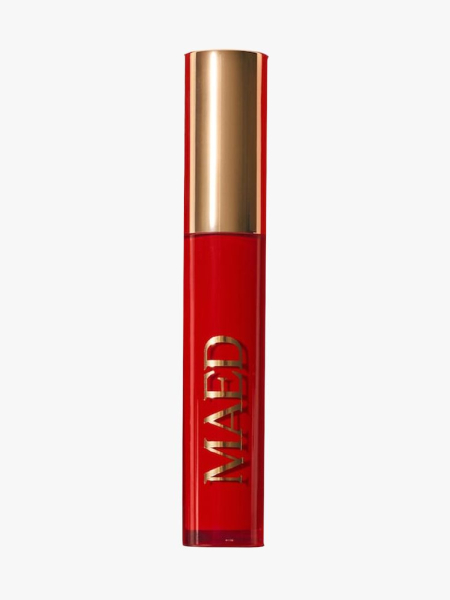
Maed
Signature Lip Pigment in Ritual Red
$36
Sephora
Why it’s worth it: If you can’t stand a chalky lip that settles into every line and somehow makes your lips look even drier, meet your match. Maed’s Signature Lip Pigment delivers the lasting power of a matte without the dreaded dryness or weight. The flexible formula moves with your lips, feels practically undetectable, and is packed with hydrators that keep them soft and smooth all day. The star ingredients do the heavy lifting: maca root adds dimension and a subtle glow (no flat, matte finish here), tucuma butter—a natural silicone alternative—locks in moisture and smooths texture, jojoba esters lend that buttery glide, and cherry coffee seed oil helps firm and support elasticity. Basically, it’s a long-wearing lip that feels like a gloss but performs like a liquid lipstick.
Allure commerce editor Sarah Han applying the Maed Signature Lip Pigment.
Sarah Han
Han after applying the Maed Signature Lip Pigment.
Sarah Han
Tester feedback from Han
AccordionItemContainerButtonLargeChevron
"As I've gotten older, my tolerance for drying liquid lipsticks has gone down to…zero. (Heck, back in the day when I wore liquid lipsticks every day, I probably was already thinking, Why am I putting myself through this torture?) And while no liquid lipstick will ever wear as comfortably as my beloved lip tints, Maed’s Signature Lip Pigment comes pretty darn close. The secret? Cherry coffee seed oil, tucuma butter, and jojoba esters for a gosh-darn smooth glide and subtle sheen (that dries totally matte in a few minutes). And I've never seen an applicator like this one: It has a long, tapered-in end that hugs my lips perfectly, depositing a ridiculously even layer of pigment." —Sarah Han, commerce editor
More to know
AccordionItemContainerButtonLargeChevron
- Finish: matte
- Available red shades: 1 (Ritual Red)
Sarah Kinonen, associate beauty director: Poundcake Cake Batter Liquid Lipstick in Red Velvet
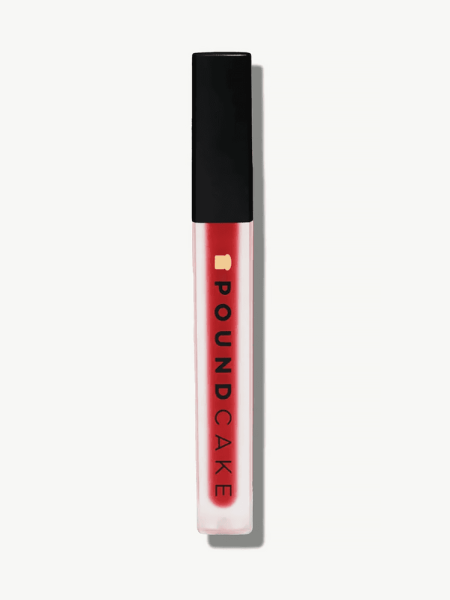
Poundcake
Cake Batter Liquid Lipstick in Red Velvet
$24
Amazon
$24
Ulta Beauty
$24
Credo Beauty

Allure associate beauty director Sarah Kinonen after applying Poundcake Cake Batter Liquid Lipstick in Red Velvet.
Sarah Kinonen
Why it’s worth it: Just about every Allure editor has the Poundcake Cake Batter Liquid Lipstick in their makeup bag. This two-time Best of Beauty Award winner is a staff favorite for its rich pigment, staying power, and impressive conditioning properties (thanks to avocado oil and vitamin E). If lip liner feels like a chore, its easy-to-maneuver doe-foot applicator makes crisp, precise lines, so it acts as a two-in-one. It’s also super buildable—dab it on with your finger for a soft, just-bitten tint, or swipe it straight on for a bold, full-coverage lip that looks effortlessly polished.
Tester feedback from Kinonen
AccordionItemContainerButtonLargeChevron
"When I'm in the mood for a liquid lipstick, I reach for the Best of Beauty Award-winning Poundcake Cake Batter Liquid Lipstick in Red Velvet. It's a super-pigmented, suede-like formula that goes on opaque but dries down into a comfortable, long-wearing matte. Every time I've worn this bold shade I've gotten hit with compliments. It's just so good!"—Sarah Kinonen, associate beauty director
More to know
AccordionItemContainerButtonLargeChevron
- Finish: matte
- Available red shades: 6
Angela Trakoshis, former shopping market editor: Dior Rouge Dior Forever Transfer-Proof Lipstick in 999 Forever Dior

Dior
Rouge Dior Forever Transfer-Proof Lipstick in 999 Forever Dior
$48
Nordstrom
$48
Ulta Beauty

Allure former shopping market editor Angela Trakoshis after applying the Dior Rouge Dior Forever Transfer-Proof Lipstick.
Angela Trakoshis
Why it’s worth it: Dior’s Rouge Dior Forever is the luxury brand's first-ever transfer-proof lipstick, which is reason enough to scoop it up. Think intense pigment and all-day comfort that lasts up to 16 hours, which is why Allure editors wax poetic about it. Los Angeles-based makeup artist Robin Black is another fan, attesting that this pigmented formula is totally smudge-proof, an impressive feat, especially for a vibrant red like this one.
Tester feedback from Trakoshis
AccordionItemContainerButtonLargeChevron
"I waited a full three minutes after applying shade 999 Forever Dior to test the transfer-proof formula. Once the timer buzzed, I tried pressing my lips against my hand, and there wasn't any residue in sight—not on my hand, my water glass, nowhere.”—Angela Trakoshis, former shopping market editor
More to know
AccordionItemContainerButtonLargeChevron
- Finish: matte
- Available red shades: 9
Lexi Herrick, former director of audience development: Stila Stay All Day Liquid Lipstick in Beso
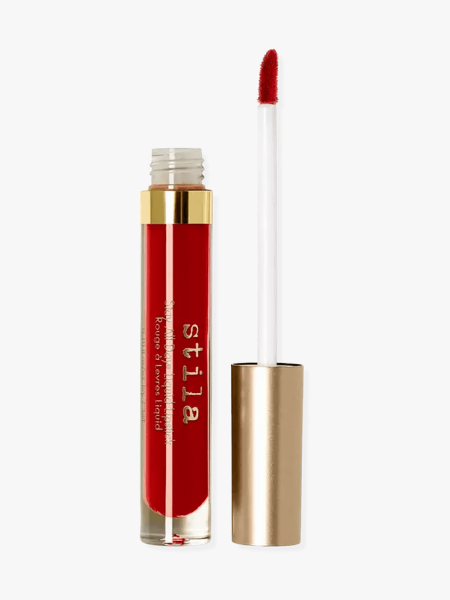
Stila
Stay All Day Liquid Lipstick in Beso
$24
Amazon
$24
Nordstrom
$24
Ulta Beauty

Allure former director of audience development Lexi Herrick after applying the Stila Stay All Day Liquid Lipstick Matte in Beso.
Lexi Herrick
Why it’s worth it: The Stila Stay All Day Liquid Lipstick Matte in Beso is another Allure Best of Beauty Award Hall of Famer that offers bold, stop-you-in-your-tracks pigment. Its bright candy-red shade, matte finish, and creamy formula are so good that one swatch is enough to make you a die-hard fan of this long-lasting lipstick. While most liquid lipsticks need an added layer for vibrancy, one coat of Stay All Day is all you need for an opaque finish.
Tester feedback from former director of audience development Lexi Herrick
AccordionItemContainerButtonLargeChevron
"The Stila Stay All Day Lip Stain in the Beso shade is the red lipstick that made me fall in love with red lipstick. I cannot possibly exaggerate how long-lasting this lipstick is—it feels scientifically impossible. I have worn this lipstick from dawn to midnight without it fading. It's virtually transfer-proof and has a smooth, forgiving application. It's extremely vibrant and mattifying, and a staple in my makeup routine."—Lexi Herrick, former director of audience development
More to know
AccordionItemContainerButtonLargeChevron
- Finish: matte
- Available red shades: 3 (Beso, Bordeaux, Deep Wine)
More red lipsticks we love
Best Lip Definer: Pat McGrath Labs Dramatique Mega Lip Pencil in Elson

Pat McGrath Labs
Dramatique Mega Lip Pencil in Elson
$29
Nordstrom
$29
Ulta Beauty
Why it’s worth it: If you’ve ever seen Pat McGrath apply lipstick in person, you know it’s pure magic. In just seconds, she creates a stunning, high-impact lip that looks practically airbrushed. Now, with the 2025 Best of Beauty-winning Pat McGrath Labs Dramatique Mega Lip Pencil, we get to channel that same artistry. The creamy formula glides on smoothly, the tapered tip makes defining effortless, and the shade range delivers on its name (dramatique, quite literally). You’ll have a few minutes to blend and perfect your look before it sets, and once it does, expect serious staying power (as in, you’ll need a washcloth and remover to take it off).
Tester feedback from Fowler
AccordionItemContainerButtonLargeChevron
“I love these lip pencils, which are more crayon than pencil, by my definition. The tip is large and round enough to easily fill in lips, but pointed enough to be precise around the edges. The texture is super creamy and weightless—a perfect formula for everyday wear.” —Ingrid Fowler, senior art director
More to know
AccordionItemContainerButtonLargeChevron
- Finish: matte
- Available red shades: 2
Best Drugstore: Essence The Slim Stick in Nice Spice
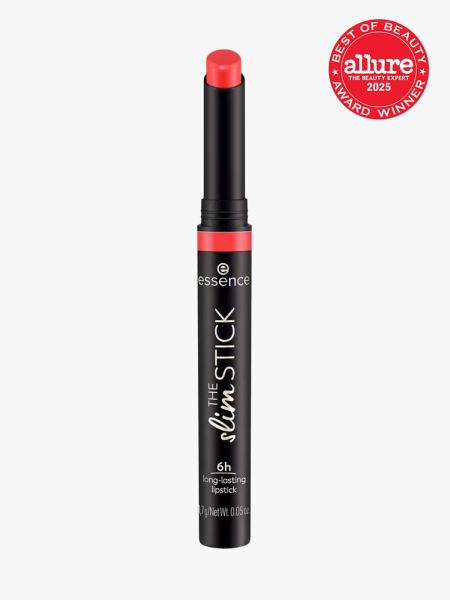
Essence
The Slim Stick in Nice Spice
$5
Amazon
$5
Ulta Beauty
Why we love it: A single swipe of Essence’s The Slim Stick delivers rich, velvety color that rivals high-end formulas, at a fraction of the price. A 2025 Best of Beauty Award winner for Best Matte Lipstick (no small feat), this ultra-slim bullet is loaded with pigment for full coverage in one go, while a blend of jojoba, coconut, and macadamia oils keeps it feeling light and comfortable. Despite its airy texture, it doesn’t budge easily—our testers were impressed by how long it lasts. It’s a drugstore gem that truly over-delivers for the investment. Case in point: During Best of Beauty testing, our editors reported up to eight hours of wear with zero signs of fading.
Tester feedback from senior copy manager Leslie Lipton
AccordionItemContainerButtonLargeChevron
“For literally pennies—well, 499 of them—this lipstick has a creamy, matte finish with the staying power of others that cost 10 times more. The velvety, saturated color (loving Nice Spice right now) goes on after my morning coffee and lasts through lunch. Plus, the skinny, angled tip makes precise application a breeze—lip liner not required.” —Leslie Lipton, senior copy manager
More to know
AccordionItemContainerButtonLargeChevron
- Finish: matte
- Available red shades: 3
Frequently Asked Questions
How do I choose the best red lipstick for my skin tone?
Anyone can wear whatever red lipstick they like, full stop. "The right red is the one that makes you feel good," says Los Angeles-based makeup artist Fiona Stiles, whose clients include Margot Robbie, Gabrielle Union, and Lily Collins.
However, you can expedite finding a red lipstick you love by considering your skin tone and your skin's undertone. New York City-based makeup artist Diane Kendal previously told Allure that red shades with blue undertones give cool-toned, fair-to-light-medium complexions a more radiant appearance and even make teeth look whiter. For warm, medium skin tones, Kendal suggested orange-red shades—"Intense, yes, but they make olive skin glow by bringing out its golden tones," she says. As for deeper skin tones, she recommended red hues "with a lot of pink," which she said works beautifully against dark complexions.
How do you make red lipstick last?
We all love the look of freshly applied lipstick, but after a few hours (or drinks), things can start to look messy. Don't fret, because there are quite a few ways to make your look last for hours on end. Back in the day (2010 to be exact), New York City-based makeup artist Peter Phillips previously gave Allure editors a few tips on ensuring that any lip look stays put—and these hacks are still used by our staff to this day.
- Prep your lips: Your results will only be as smooth and seamless as the actual skin on your lips. To smooth your skin pre-lipstick, try using a lip scrub or a damp washcloth to buff dry flakes. "Pat on a clear lip balm and give it a few minutes to sink in, then blot with a tissue," said Phillips.
- Use setting powder after applying your lipstick: Makeup artists and Allure editors alike abide by this tip, especially when it comes to smudge-prone shades like red. Phillips recommended dabbing a light amount on the lips to keep your lipstick in place without drying out your skin. "Close your mouth, smile, and then dust a little face powder on your lips with a fluffy brush," he says. “Don't reapply lipstick or it could get cakey.”
- If matte lipsticks are too dry for your lips, use a satin-finish option instead: Since many long-wearing lipsticks are matte and can dry out your lips, Phillips prefers satin-finish, pearlescent lipsticks. "The shine is created by pearl pigments and not by the texture. It's not as moist as a creamy lipstick and will therefore stay on longer," he said.
Meet the experts
- Fiona Stiles is a Los Angeles-based makeup artist.
- Robin Black is a Los Angeles-based makeup artist.
- Diane Kendal is a New York City-based makeup artist.
- Peter Phillips is a New York City-based makeup artist.
How we test and review products
When Allure tests a product, our editors look at it from every angle in an effort to best serve you. We review ingredients, scrutinize brand claims, and, when necessary, examine peer-reviewed scientific and medical studies. In addition to testing every product that’s included in each and every review, we rely on experts who shape their fields, including dermatology, cosmetic chemistry, and medicine, to help us vet the ingredients and formulas.
For our list of the best red lipsticks, we considered each product’s performance across five primary categories: product ingredients and efficacy, packaging, fragrance, texture, and product wear. Every product was determined to have excelled in each category by our editorial team, which is composed of in-house writers and editors as well as contributors — along with special consideration from makeup artists. To learn more information on our reporting and testing processes, read our complete reviews process and methodology page.
Our staff and testers
A beauty product is a personal purchase. You might be searching for a face cream to address persistent dryness or a new nail product to add to your Sunday self-care routine; you may simply be browsing around for the latest launches to hit the hair market. No matter what you seek or your individual needs and concerns, Allure wants to ensure that you love anything we recommend in our stories. We believe that having a diverse team of writers and editors—in addition to the wide range of outside testers and industry experts we regularly call upon—is essential to reaching that goal.
After all, can we really say a skin-care product is the "best" for people over 50 if the only testers we've solicited opinions from are folks who have yet to hit 30? Can we honestly deem a high-end diffuser worthy of your hard-earned cash if it’s never been tested on curls? We're proud that our staff spans a wide range of ages, skin tones, hair textures, genders, and backgrounds, which means that we are able to fairly assess any beauty product that comes into the beauty closet.
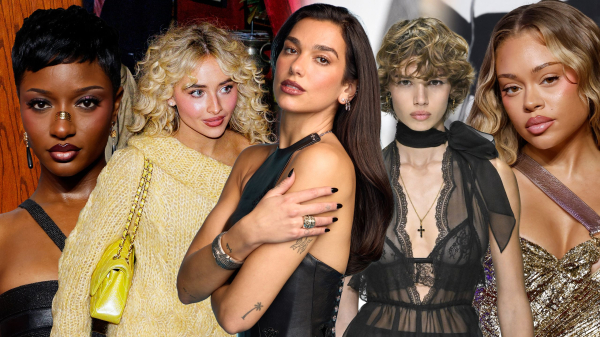 Getty ImagesSave this storySave this story
Getty ImagesSave this storySave this story
